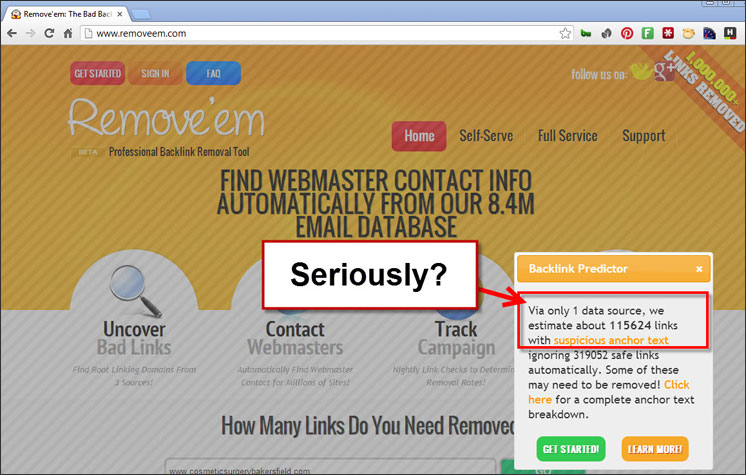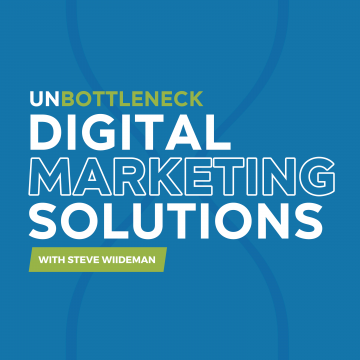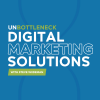For an inbound marketer, there is no feeling worse than watching a competitor game their way to the top of search results. While you’re out there spending money on public relations, helping the community, and building the absolute best reputation of anyone in your industry, your competitor has his feet up on the desk laughing in your face.
Case in point, cosmeticsurgerybakersfield.com.
In this post we are going to analyze the link and citation profile, and historical search data we have for the domain to better understand how it has managed to weasel its way past three recent Google algorithm updates: Panda, Penguin and EMD.
JumpTo Criteria (hybrid local & natural SEO):
- Exact Match Domain
- Link Profile
- Anchor Text
- Citations / Business Listings
- Ratings / Reviews
- Social Media
- Duplicate Content
Below is a screenshot of the domain’s keyword placement as of June 6, 2013:
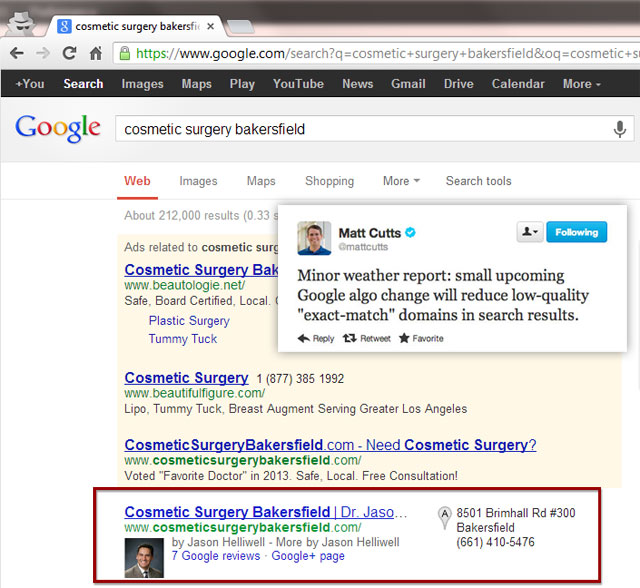
Exact Match Domain
In October, Matt Cutts announced a “weather report” that would affect low-quality exact match domains, referring to domains with limited authority. The site is clearly exact match, but are more people searching for the domain, then say the next competitor in search: Beautologie? Let’s find out:

Clearly, there are not more searches for the domain or for Dr Helliwell. Based on the Vince Update of 2009, Google is supposed to give more weight to brands. Therefore no, neither the business or domain have more search authority than other results.
Link Profile
Google Penguin 1.0 and Penguin 2.0 are algorithm updates that allegedly penalize websites with suspicious link profiles. We don’t have access to the Webmaster Tools, so we’ll have to use a few 3rd party tools to get as much insight as we can.
According to suspicious link detection tool RemoveEm.com, this EMD site has one heck of a nasty link profile. Yes, that number is 115,624 suspicious links (see screenshot below):
Want to see the entire link profile? Here you go: http://goo.gl/kLWFr
The folks at ahrefs.com also have some interesting data:
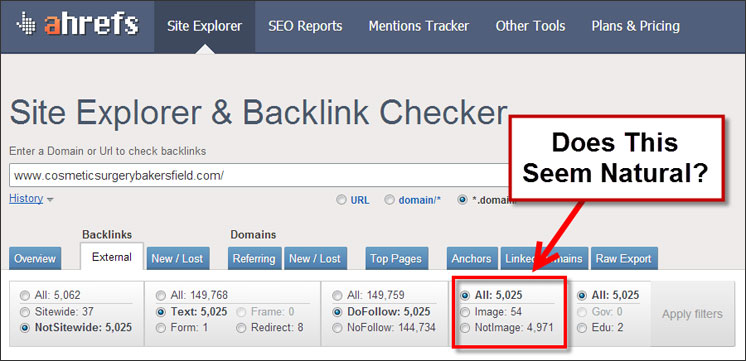
For only 1% of the inbound links from over 5,000 domains to be images seems somewhat odd doesn’t it? Now take a look at quality of some of the actual links they’ve been going after:
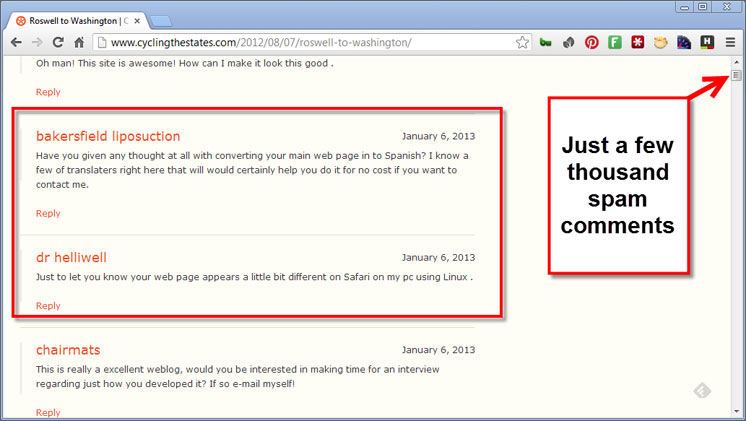
High quality stuff right? (Yuck)
Anchor Text
Part of Google Penguin’s job is to identify excessive “commercial keywords” used within external links. If your link profile shows mostly brand names, URLs, click here, and a few keywords used, you have a “natural” link profile.
This doctor’s SEO company did something slick: they insured that the majority of their crappy links included the brand name; in fact, TWO variations of the brand name, then they spammed the living hell out of the rest of the backlinks with hundreds of commercial keyword variations (see screenshot below).
Based on the results, should we just assign a budget of $1k/mo for “brand name spam” and $1k/mo for “100 variations of commercial keyword spam”? Because obviously the news sites and charity organizations some of the competitors are earning links from have zero value compared to the crap this SEO company is slinging.
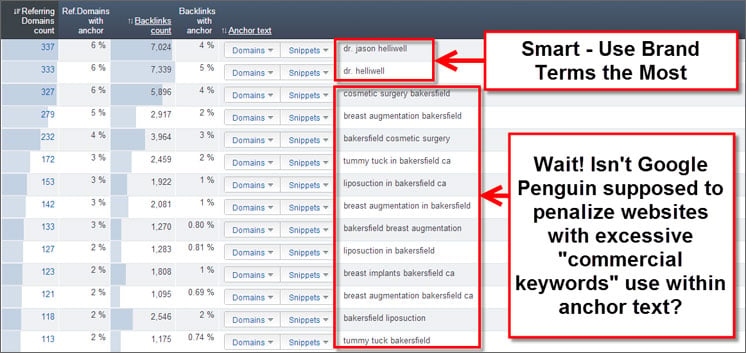
Citations / Business Listings
Local SEO has many search ranking factors. Among them, the geographical location and the distance from where you are to the closest local business. As you can see from the screenshot below, the business is absolutely NOT the closest to what Google has as the centerpoint of Bakersfield:
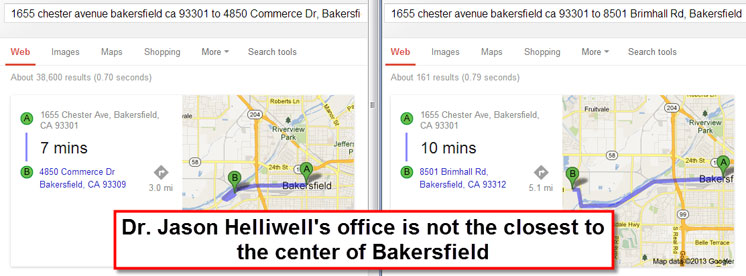
Which brings us to citations (or business listings), which work similar to links when the business Name, Address, and Phone (N.A.P.) all match. Thanks to our friends at Whitespark and their local citation finder tool, we’re able to detect and note the limited 17 citations earned compared to the average 57 earned by competitors:

What types of citations do competitors have? General and industry-relevant citations, compared to Dr. Spam:
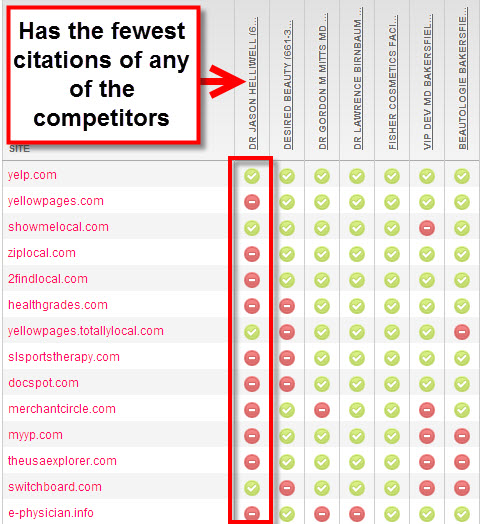
Ratings & Reviews
Though Google wasn’t showing Zagat reviews at the time of this post, some simple math can help one figure out that half of the reviews on the Google Plus Local page were negative in nature. Now I don’t know what Google’s thinking, but based on the positive reviews of competitors, it seems that they’d want to rank websites with positive reviews higher than those with negative ones. Must be their lucky day.
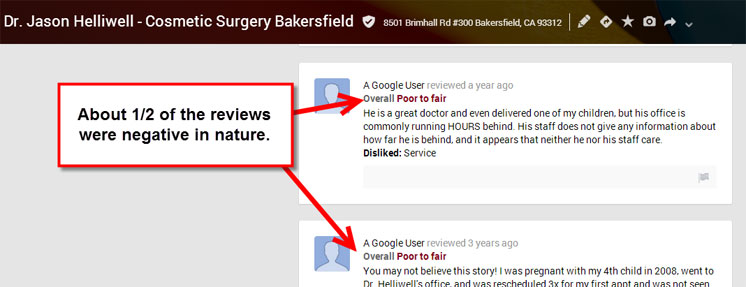
Social Media Signals
Not accounting for AuthorRank, social shares among the top ranked cosmetic surgeons aren’t much to boast about across the board (see table below, courtesy of our friends at the new Moz.com). Despite the fact that they have a few more Likes and Tweets, none of the businesses appear to have any engagement with industry influencers, thereby virtually nullifying any potential value from social media. Social isn’t a signal based on volume, it’s one based on value and authority.

Duplicate Content
We discussed Exact Match Domain and Google Penguin, but haven’t yet mentioned Panda. Well, low and behold, several pages throughout the website are actually direct copies of content stolen from other domains. In the example below, notice how the tummy tuck page plagiarizes CosmeticGynCenter.com’s tummy tuck content, which (thankfully) is causing that particular page to be omitted from Google results.
You tell me, is this a website deserving of top placement within search results?
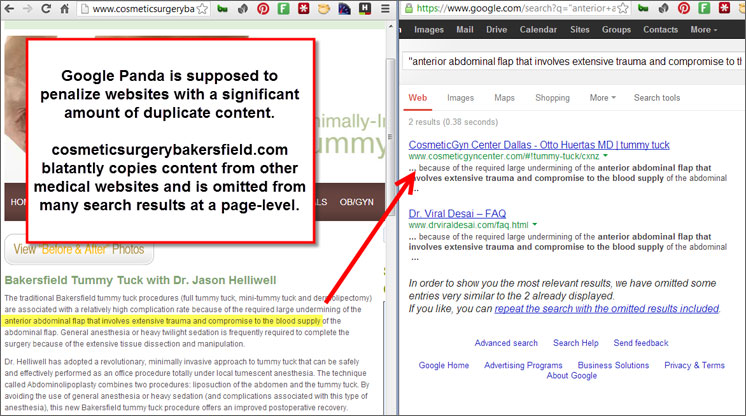
Now the Big Question: What Will Google Do About This?
According to Matt Cutts, Google plans to make several search quality improvements over the summer, so there is a likelihood that this spammer will get caught and penalized. However, from what I understand this particular listing has survived every update Google has thrown at it. Perhaps it’s time for a manual review?
Your comments on this post are extremely appreciated!
